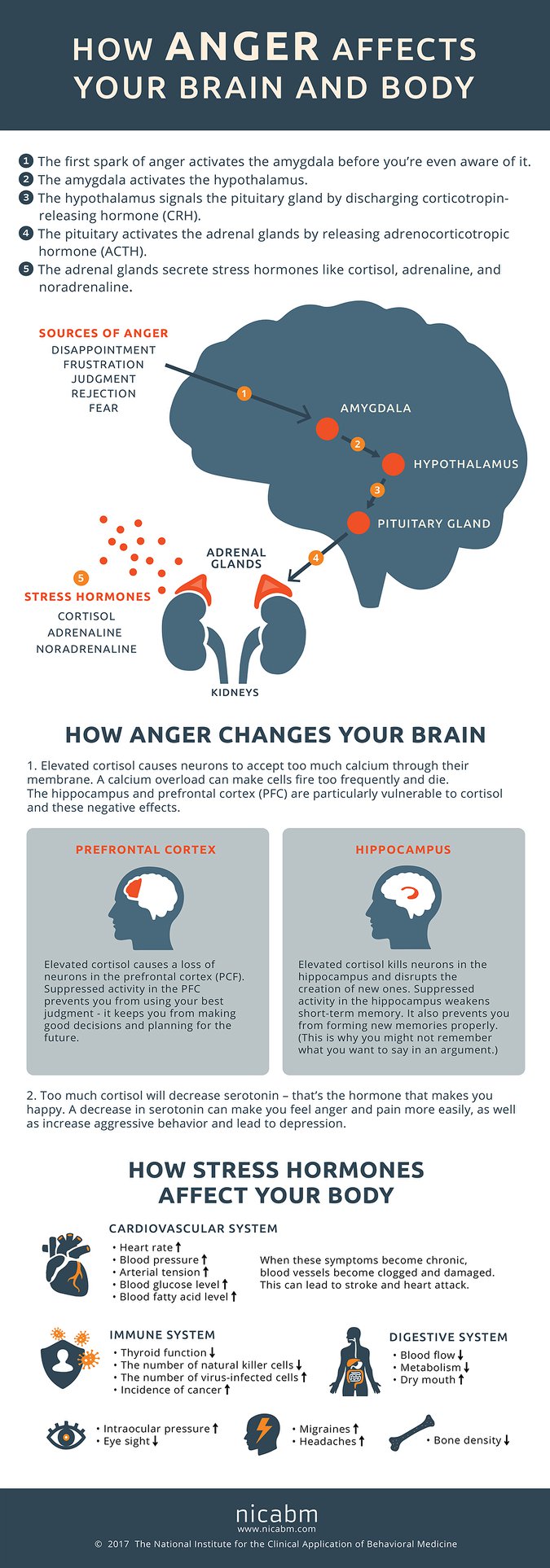Really Understanding Your Anger!
Scam Victim Anger Works Against Recovery
A Full Third Of Scam Victims Lose Themselves To Anger After The Discovery
Anger is a normal part of the grief cycle but it easily gains control and prevents a victim’s ability to move forward
How Anger Affects Your Brain and Body
Anger Can Be A Challenging Emotion To Work Through
Sometimes our anger can be frightening. Or, maybe we consider it inappropriate to even feel this way at all. Not only that, when anger is misdirected, it often leads to poor choices, damaged relationships, and even violence.
We see this in about one-third (1/3) of scam victims. It leads to vigilantism and many other bad, sometimes delusional choices. It can cause rejection of assistance from professionals, and gravitation towards other angry individuals. It can block emotional recovery and re-integration with family and friends after the discovery of a scam, especially when shame is a significant component.
But What’s Really Going On In The Brain And Body When Anger Is Triggered?
HERE IS A WAY TO VISUALIZE THIS:
In The Heat Of Anger, We Often Don’t Use Our Best Judgment
We may say and do things we later regret or lose track of what we’re arguing about. Anger affects all of our actions and decision making,
Why Is That?
It has to do with CORTISOL.
Anger can spark an overload of cortisol in the brain, and this can lead to numerous problems.
Where Does The Cortisol Come From In The First Place?
WHEN THERE’S TOO MUCH CORTISOL IN THE BRAIN …
Anger Is An Important And Sometimes Necessary Emotion
But All Too Often, Anger Can Quickly Escalate And Become Destructive Once It’s Been Triggered
Uncontrollable anger can often create problems in relationships both at home and in the workplace. But beyond that, it can have devastating physical consequences. It also leads to terrible decision-making and potentially delusional behavior.
How And Where Does Anger Impact The Body?
HOW ANGER AFFECTS YOUR BRAIN AND BODY
Information & Infographics courtesy of the National Institute for the Clinical Application of Behavioral Medicine • Copyright Acknowledged, Used With Permission of the Author NICABM.com
More Information About CORTISOL:
- https://www.webmd.com/a-to-z-guides/what-is-cortisol
- https://www.yourhormones.info/hormones/cortisol/
- https://www.mayoclinic.org/healthy-lifestyle/stress-management/in-depth/stress/art-20046037
- https://www.healthline.com/health/high-cortisol-symptoms
- https://www.healthline.com/nutrition/ways-to-lower-cortisol
A Practical Skill for Defusing Anger
When Tempers Flare And Rage Ensues, Your Relationships Suffer As Does Your Ability To Follow The Path Of Recovery!
The stress levels skyrocket, and reactivity simply takes over.
So how can people shift out of anger once the fuse is lit?
In the video below, Marsha Linehan, Ph.D. will share a practical skill to help defuse anger before it escalates beyond control. The video is created for psychologists but can be useful for you to practice yourself.
Take a look – it’s about 2 ½ minutes.
5 Ways to Diffuse Your Anger By Dr. Tracey Marks
To better understand how to stop before you lose control, let’s look at the cycle of anger.
First You Have A Triggering Event
This would be something like feeling disrespected or used or having someone cut you off in traffic. In the case of scam victims, it is just thinking of or being reminded of your scam. This is followed by negative thoughts. These are automatic thoughts that pop into your mind right after the triggering event. Then you have an emotional response to your thought, even if your thought isn’t rational.
Physical Symptoms
The next step in the cycle is the physical symptoms. Like a racing heart, or sweaty palms, or even tense muscles and jaw clenching. Then you have the behavioral response of yelling, cursing and arguing, or maybe even crying.
So with this cycle, you have things going on in your head that lead to behaviors. There are different places in this cycle you can change to address anger. This video is focused on the behavioral response.
Diffusing Techniques
Technique 1
Practice taking 3 deep breaths before you respond. This gives you the chance to resist lashing out automatically. Many times the anger response is impulsive and if you had been able to wait even 5 seconds, you may have had the control to hold back on saying something hurtful that you can’t take back.
Technique 2
Develop canned responses to controversial topics. If you’re always around people who like getting into political discussions and their views are opposite of yours, you want to already know what to say to shut the conversation down or make it clear that you have no comment. Prepare a couple of statements you can use for any topic or situation that you know triggers you. If someone repeatedly tries to engage you in the conversation or activity that you’re avoiding, use the broken record technique where you give the same response. You don’t need to craft another response, so they get it this time. Saying the same thing in the same tone sends a stronger message that you mean what you said.
Technique 3
Develop statements that de-escalate the situation before you get too angry. These would be statements like I need to take a break I need a time out – we can talk later Or the classic, maybe we need to agree to disagree on this
These are canned statements similar to the no comment statements, but the purpose of these statements is to stop a conflict that you have already participated in but you recognize it’s getting too heated for you and you’re about to blow. This is where it is helpful to know what your physical symptoms are when you start to get angry or rageful. This is step 4 in the cycle of anger. Do you start sweating? Does your chest get warm? Knowing this about yourself can help you recognize when you are going down the path to rage and know when to use this technique.
Technique 4
Stop and observe your anger. Examine it as if you’re another person in the room looking at you. What do you look like? Do you appear intensely angry because you’re throwing things? Or do you seem snippy and hot-headed? Are you talking loudly or brooding in your head? By disengaging from your anger and actually observing it in a mindful way, you take the energy out of it. This gives you time to avoid lashing out.
Technique 5
Use diversions. Let’s say you remove yourself from the situation, by using the third technique of shutting things down with an I need a time out statement. Do something to distract yourself like listening to music, taking a brief walk, or even coloring. Coloring complex drawings is a popular stress-reduction technique.
TAGS: SCARS, Psychology of Scams, Anger, Rage, Cortisol, Hormones, Infographic, Anger Management, Anger Control, Scam Victim Recovery
PLEASE SHARE OUR ARTICLES WITH YOUR FRIENDS & FAMILY
HELP OTHERS STAY SAFE ONLINE – YOUR KNOWLEDGE CAN MAKE THE DIFFERENCE!
THE NEXT VICTIM MIGHT BE YOUR OWN FAMILY MEMBER OR BEST FRIEND!
By the SCARS™ Editorial Team
Society of Citizens Against Relationship Scams Inc.
A Worldwide Crime Victims Assistance & Crime Prevention Nonprofit Organization Headquartered In Miami Florida USA & Monterrey NL Mexico, with Partners In More Than 60 Countries
To Learn More, Volunteer, or Donate Visit: www.AgainstScams.org
Contact Us: Contact@AgainstScams.org


![Really Understanding Your Anger [INFOGRAPHIC][VIDEOS] 1](https://romancescamsnow.com/wp-content/uploads/2021/03/really-understanding-your-anger.png)
![NICABM-InfoG-Anger-Part1-optimized[1]](https://romancescamsnow.com/wp-content/uploads/2021/03/nicabm-infog-anger-part1-optimized1-scaled.jpg)
![NICABM-InfoG-Anger-Part2-optimized[1]](https://romancescamsnow.com/wp-content/uploads/2021/03/nicabm-infog-anger-part2-optimized1-scaled.jpg)
![NICABM-InfoG-Anger-Part3-optimized[1]](https://romancescamsnow.com/wp-content/uploads/2021/03/nicabm-infog-anger-part3-optimized1-scaled.jpg)



It’s rare that I ever feel really angry with someone or at a life event. Growing up I had an older brother who lost his temper often and I always thought he looked really silly when he got angry. I learned a lot of what not to do watching my brother.